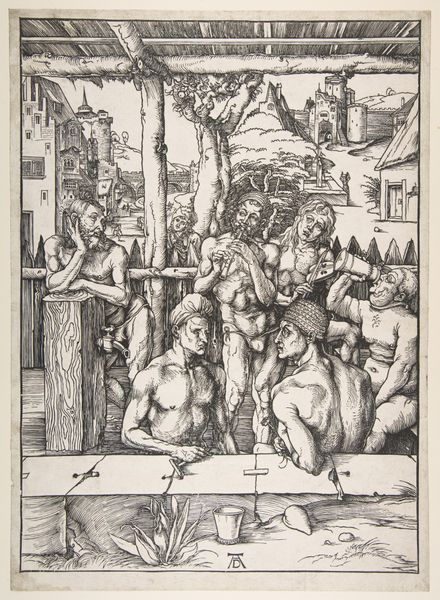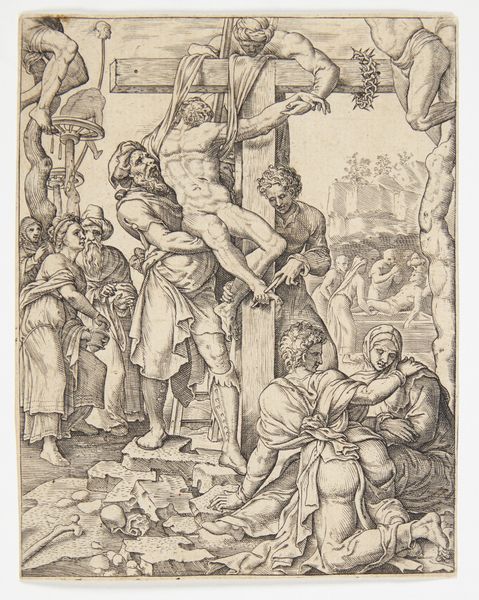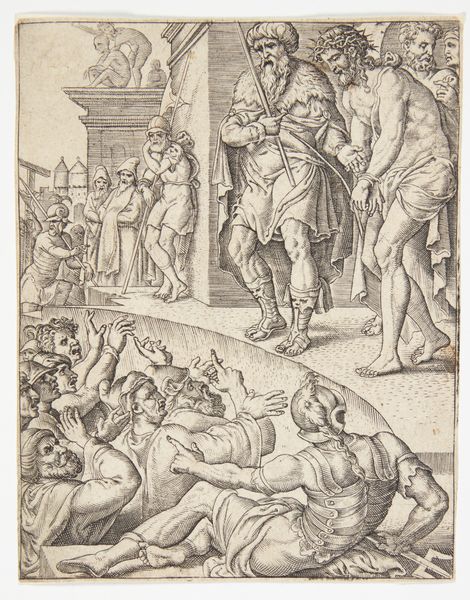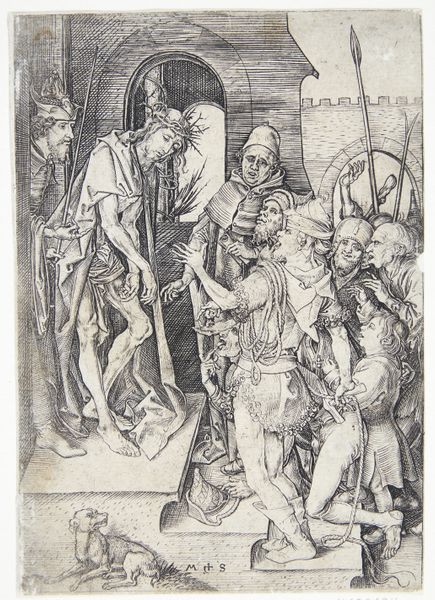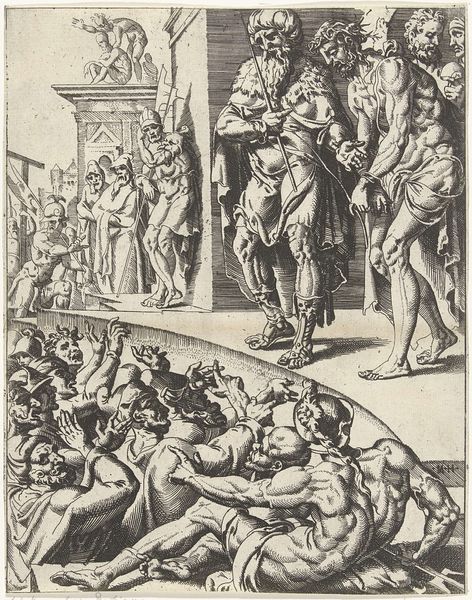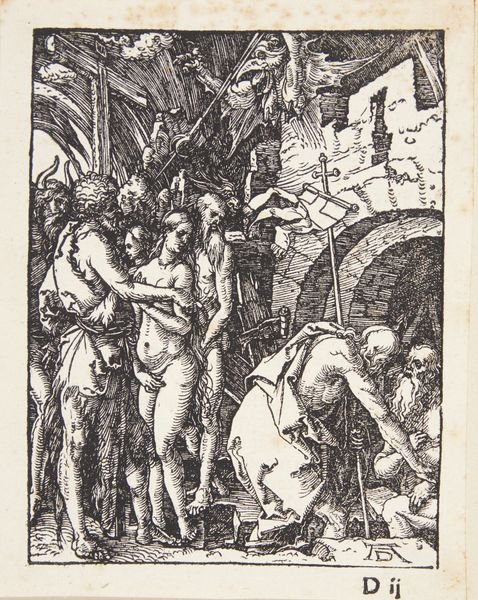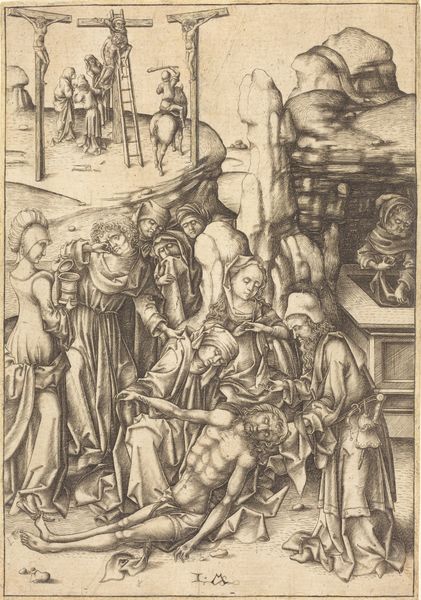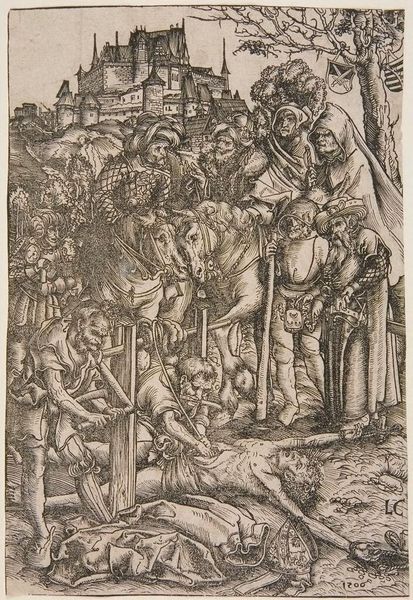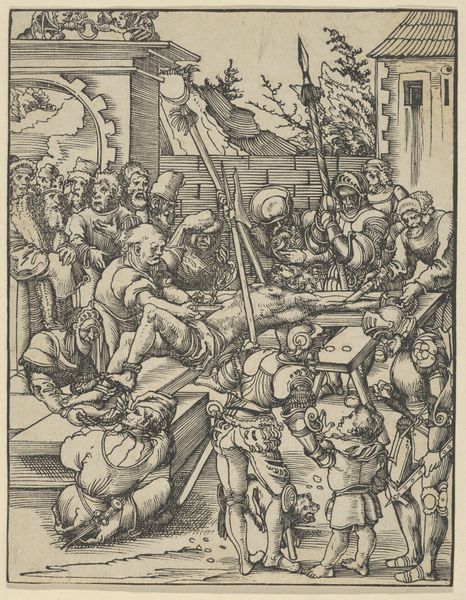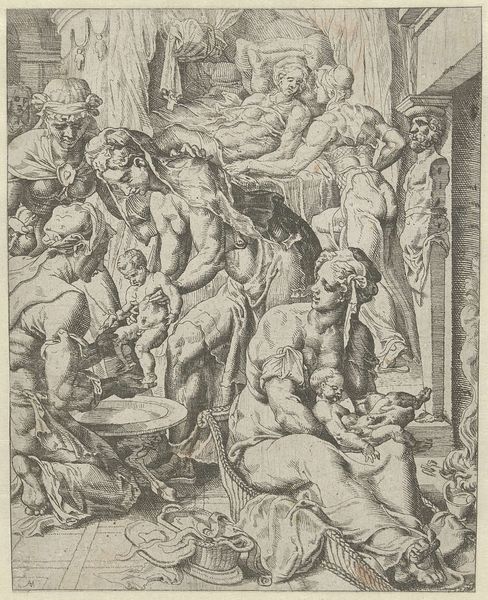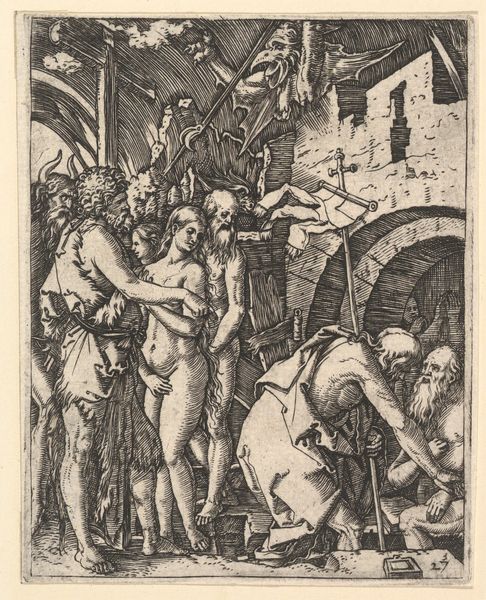
drawing, print, ink, pen
#
portrait
#
drawing
#
ink drawing
#
pen drawing
# print
#
pen illustration
#
pen sketch
#
figuration
#
11_renaissance
#
ink
#
men
#
pen work
#
pen
#
genre-painting
#
northern-renaissance
#
nude
Dimensions: sheet: 15 1/4 x 11 in. (38.7 x 27.9 cm)
Copyright: Public Domain
Curator: Looking at "The Bath House (copy)" produced sometime between 1485 and 1600 in ink, I’m struck by how it captures a scene of social congregation, yet there’s an undercurrent of something more complex in its depiction of the nude male figures. Editor: It’s quite chaotic at first glance. The sheer density of the figures packed into a confined space is almost overwhelming, but there is also a voyeuristic feel of being an unwanted visitor looking at them through the planks of the sauna. Curator: I see that initial chaos, but consider the history of the public bathhouse in the Renaissance. They were spaces of social mixing, and that is what is captured here: it's class, gender, and societal norms intersecting in a public space. It brings forward themes related to display, surveillance, and identity performance in the late fifteenth century. Editor: Symbolically, water represents cleansing and purification. The act of communal bathing is rich with associations of shared humanity and social bonds, which counters that voyeuristic vibe I had originally felt, because the cultural continuity of the importance of hygiene also played an equal role in health back then as it does now. So maybe these visual emblems remind us of our collective journey for well-being and connection. Curator: Exactly. But that sense of well-being isn't equally distributed or available. These spaces, especially then, became sites of regulation. The figures themselves are individualized, some looking directly out, others absorbed in activities, so that even within a communal setting, one wonders about power dynamics between gazes or the availability to self care, specifically who has access and who is excluded, which echoes to contemporary concerns with socioeconomic disparities. Editor: Considering the setting, one of the details I noticed is that the artist signs his work in a prominent location on what looks to be the ground sill in front of the bathers, not just marking his presence but claiming the importance of craftsmanship. It adds a layer to the narrative; this scene isn’t just documentation but a consciously created, curated representation. Curator: Yes, locating that "sign" or "signature" literally grounds the artist within this very complicated socio-political terrain of class, body politics, and spatial use, prompting questions about the artist’s own positioning and social commentary, or lack thereof. Editor: Looking closer now, I appreciate how symbols intermingle: hygiene and hierarchy meet the penmanship. It really ties it all together and expands my initial observation, going past that voyeurism toward social commentary as you were saying earlier. Curator: Exactly. By examining these nuances and drawing connections to social power structures of the time, “The Bath House (copy)” speaks to us today.
Comments
No comments
Be the first to comment and join the conversation on the ultimate creative platform.
